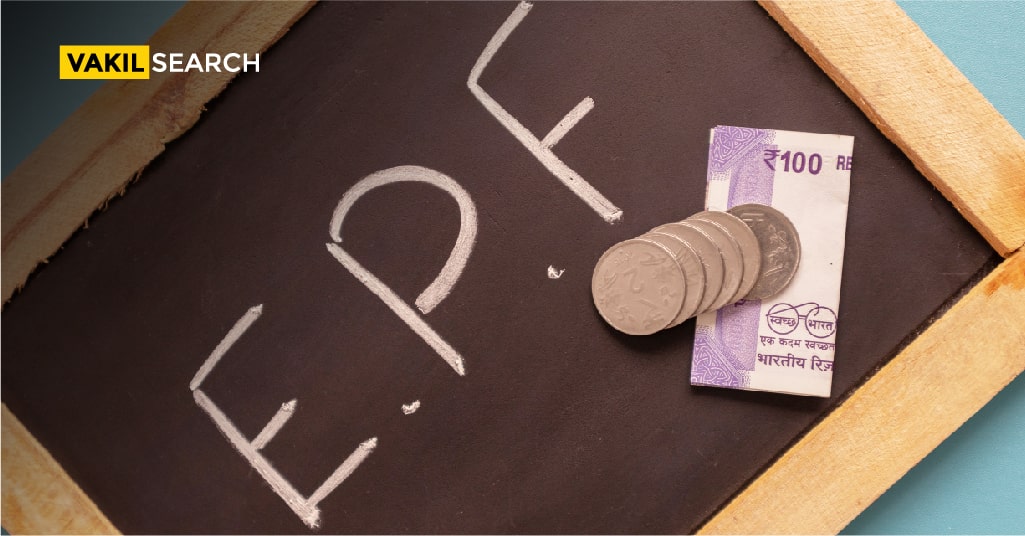This blog post aims to offer a detailed, step-by-step guide on how to update KYC details in a PF account. We’ll define KYC in the context of PF accounts and go through the process of updating KYC details. Additionally, we’ll share crucial points to remember during the update process to ensure a hassle-free experience.
Overview
EPFO KYC update refers to the process of verifying and updating the essential details of an EPF (Employee Provident Fund) account holder. The KYC verification involves providing and validating specific personal information and documents to ensure the authenticity of the account holder’s identity. Common KYC details required by EPFO include the PAN (Permanent Account Number) card number, Aadhar card number, and bank account details.
KYC can be done on the EPFO site, where individuals are required to have UAN credentials. This process involves logging into the EPFO UAN portal and uploading the necessary documents for KYC verification. The essential KYC details include PAN card number, Aadhar card number, and bank account details. Immediate KYC updates are crucial to enjoy benefits such as seamless fund transfers and withdrawals without delays. Failure to update KYC may result in denied petitions, especially if bank account information is outdated, and it may also lead to a loss of SMS updates for the EPF account holder.
What Is EPFO KYC?
EPFO KYC, or Know Your Customer, is a vital process in the financial landscape. It essentially involves verifying the identity and address of an individual using valid documents. For EPFO, this KYC process becomes essential to facilitate seamless transactions and to ensure that your financial information is up-to-date and accurate.
EPFO KYC Details Include
The EPFO KYC update encompasses several personal details that help authenticate your identity and financial transactions. These details generally include:
- Aadhar Card: The unique Aadhar number issued by the government
- PAN Card: The Permanent Account Number issued by the Income Tax Department
- Bank Account Details: Your bank account number and IFSC code
- Passport: Valid passport details, if available
- Driving License: If you possess a driving license, it can also be included
- Voter ID: Your Voter Identification card details.
Services Unavailable Without EPFO KYC
It’s essential to comprehend that without updating your EPFO KYC, you might face limitations in accessing various services. These services might include:
- To ensure the security of your funds, EPFO mandates the verification of KYC details before processing any withdrawal requests
- Submitting a claim online requires accurate KYC details
- For the nomination of beneficiaries, KYC plays a pivotal role.
Steps to Enable EPFO KYC Update Online
- Log in to the EPFO member portal using your UAN and password
- Click on the ‘KYC’ option under the ‘Manage’ tab
- Select the type of KYC document you want to update and enter the relevant details
- Upload a scanned copy of the document and click on ‘Save’
- Once the details are verified by the employer, the KYC status will be updated.
|
Process of Embedding KYC Details in EPF UAN
To embed your KYC (Know Your Customer) details in your EPF (Employee Provident Fund) UAN (Universal Account Number), follow these steps:
Step 1: Document Submission
After your employer has verified and confirmed that your KYC details are accurate and match the official records, they will digitally attest the documents.
Step 2: Document Verification by EPFO Authorities
Once your documents have been approved by your employer, the EPFO (Employee Provident Fund Organization) authorities will further verify them to ensure there are no discrepancies or mismatches.
Step 3: Contacting EPFO Helpline (If Needed)
If, for any reason, your documents are not approved, you can reach out to the EPFO’s helpline at 1800 118 005 or send an email to uanepf@epfindia.gov.in.
Step 4: Claim Verification
Once the verification process is completed, if you raise a claim, it will be processed promptly, and your KYC details will be embedded in the EPF UAN system, ensuring a seamless experience for both employees and employers.
Process of Updating Contact Details in EPF Account
If you need to update your contact details in your EPF account, follow this online process:
Step 1: Log In
Visit the EPFO member portal and log in using your credentials
Step 2: Access the ‘Manage’ Section
From the main menu, navigate to the ‘Manage’ section
Step 3: Update Contact Details
In the dropdown menu, click on the ‘Contact Details’ option
Step 4: Select Changes
Check the box for either ‘Change mobile number’ and/or ‘Change email ID’ based on what you need to update.
Step 5: Enter New Details
Enter the new contact details you wish to update.
Step 6: Get Authorisation PIN
Click on the ‘Get authorization PIN’ button.
Step 7: Validate OTP
Enter the OTP sent to your registered contact details to validate the changes.
Step 8: Confirmation
Once the OTP is verified, the contact details will be recorded and updated within a stipulated time.
Why is it Important to Update KYC Details?
EPF members with up-to-date KYC details enjoy faster approval of claims, withdrawals, transfers and more.
Documents Required to Update KYC for EPF UAN
The following documents are necessary for updating KYC for EPF UAN:
- PAN card
- Aadhaar card
- Valid passport number
- Bank account details
- Valid driver’s license
- Valid election card
EPF KYC Update Benefits
Updating your KYC for EPF UAN offers several advantages:
- Streamlined online claim withdrawal when KYC records are current and linked to the UAN
- Seamless transition of EPF accounts
- Reduced TDS (Tax Deducted at Source) for early PF withdrawals, from 34.608% to 10%, when PAN details are updated
- Access to account activity information and monthly PF balance updates.
EPFO KYC Track Status Via
You can check your EPF KYC status using the following methods:
UAN Portal: Access your member e-Sewa Portal account, choose the ‘View’ page, and check the ‘UAN card’ option. If your KYC is complete, it will be indicated as ‘Yes’ in the KYC information row.
Documents Under KYC Tab: You can also verify your KYC status by checking the documents accepted and reviewed in the EPFO archives under the ‘KYC’ option on the ‘Manage’ page of the Member e-Sewa Portal.
EPFO UAN Helpline for KYC-Related Issues
The EPFO provides a helpdesk to address UAN-related issues, both offline and online. You can resolve queries related to:
- UAN information
- Passbook availability
- Multiple UAN allocation
- Contact detail changes
- Technical issues
- OTP-related problems
- EPF transfer
Frequently Asked Questions (FAQs)
1. How long does it take for the KYC documents to get approved?
Typically, the approval process for KYC (Know Your Customer) documents takes around three to five business days. Once the approval is successful, an SMS notification will be sent to the registered mobile number.
2. How do I check the EPF KYC status?
To check the status of your EPF KYC, follow these steps: Visit the EPFO member e-Sewa portal. Log in using your UAN, password, and captcha. After successfully logging in, select the 'KYC' option from the dropdown menu under the 'Manage' header. The 'Digitally Approved KYC' section displays a list of documents that have been accepted and reviewed, indicating the status of your KYC.
3. Is it Mandatory to update KYC details online?
No, updating KYC details online is not mandatory. However, doing so ensures that your information remains up-to-date. It also streamlines processes like transferring EPF funds from one account to another and withdrawing EPF amounts.
4. Is UAN Necessary for EPFO eKYC?
Yes, having a Universal Account Number (UAN) is essential to update your EPFO KYC online. The UAN serves as a unique identifier for your EPF account.
5. Do I Have to Visit Any EPFO Branch for KYC Update?
No, the entire KYC update process can be done online through the EPFO member portal. You don't need to visit any physical EPFO branch.
6. Can I upload my documents online?
Yes, many platforms and services offer online document upload capabilities for various purposes such as verification, applications, or submissions. Ensure the platform is secure and trusted before uploading sensitive documents, and follow any specific instructions provided for the upload process.
7. Which document details can I submit for KYC approval?
For KYC (Know Your Customer) approval, you need to submit government-issued identification documents like a passport, driver's license, or Aadhaar card in India. Additionally, you may be required to provide proof of address, such as a utility bill or bank statement, to verify your identity and address details.









